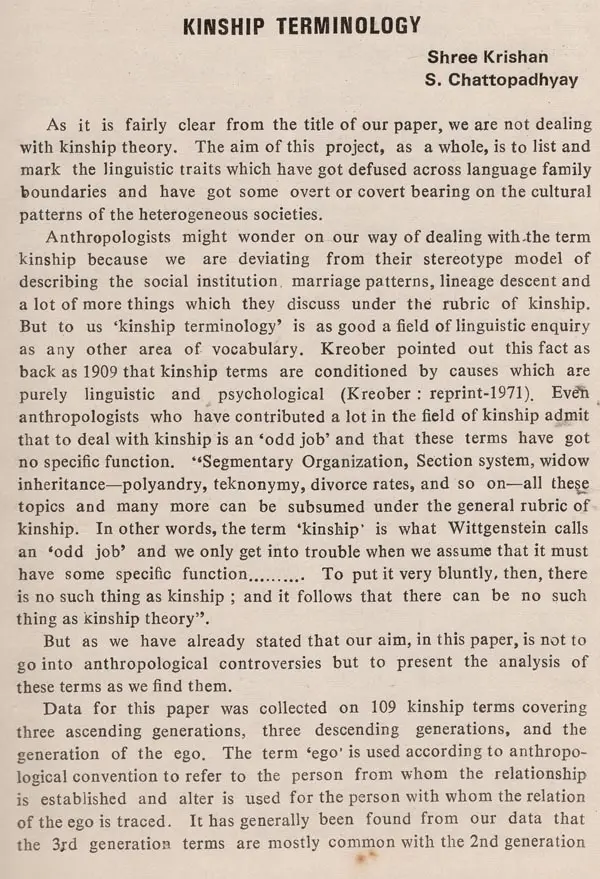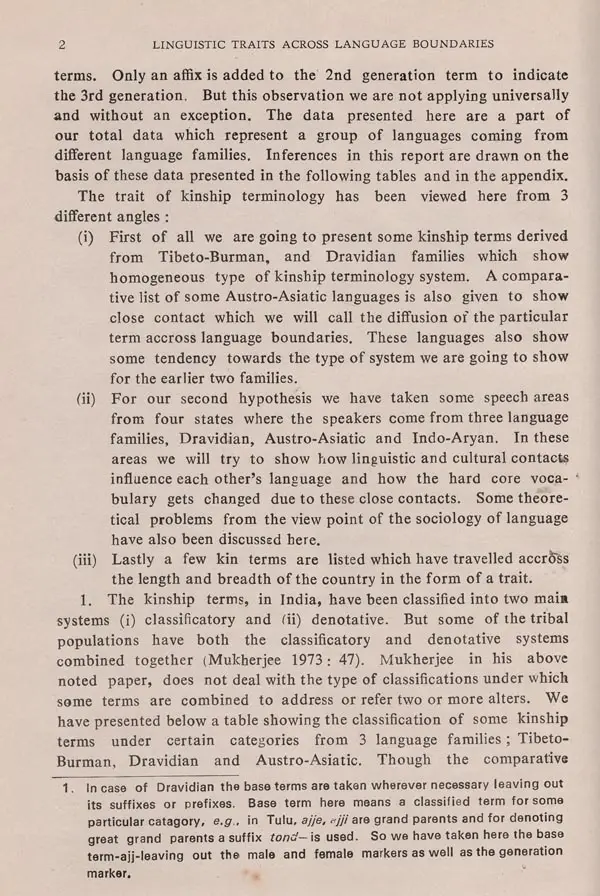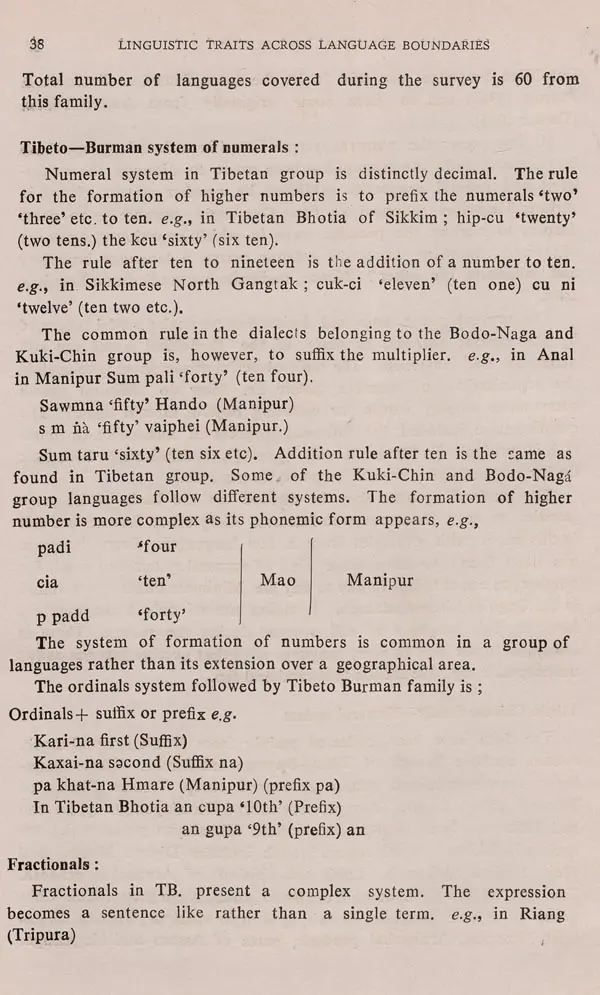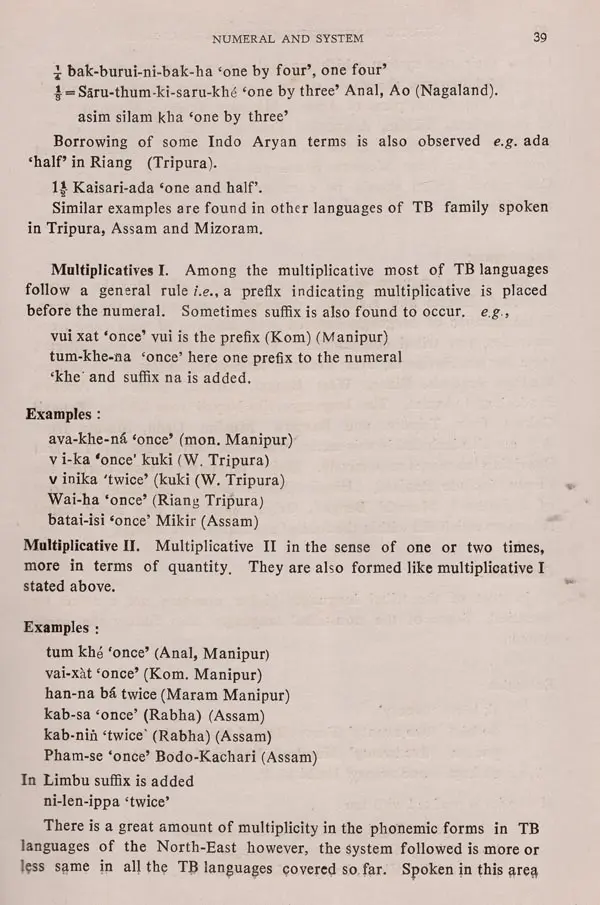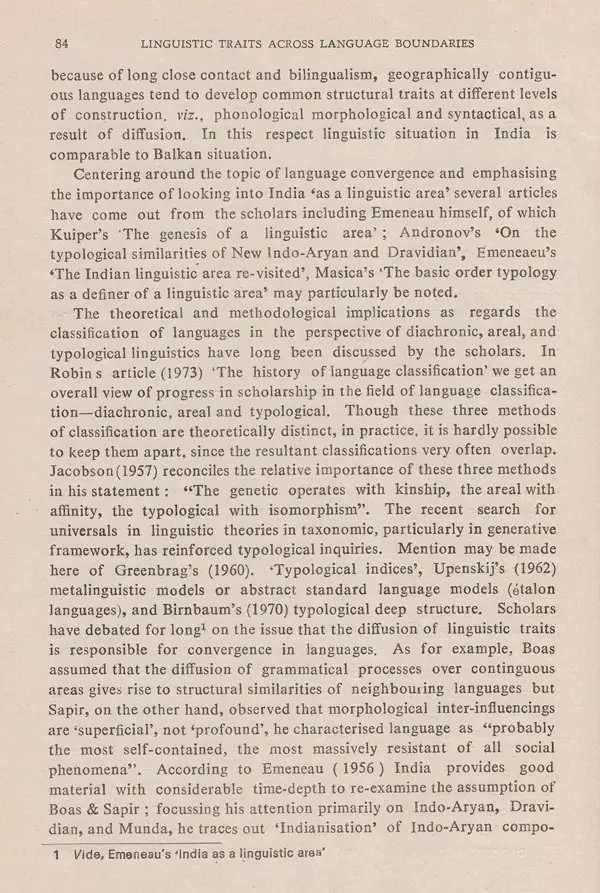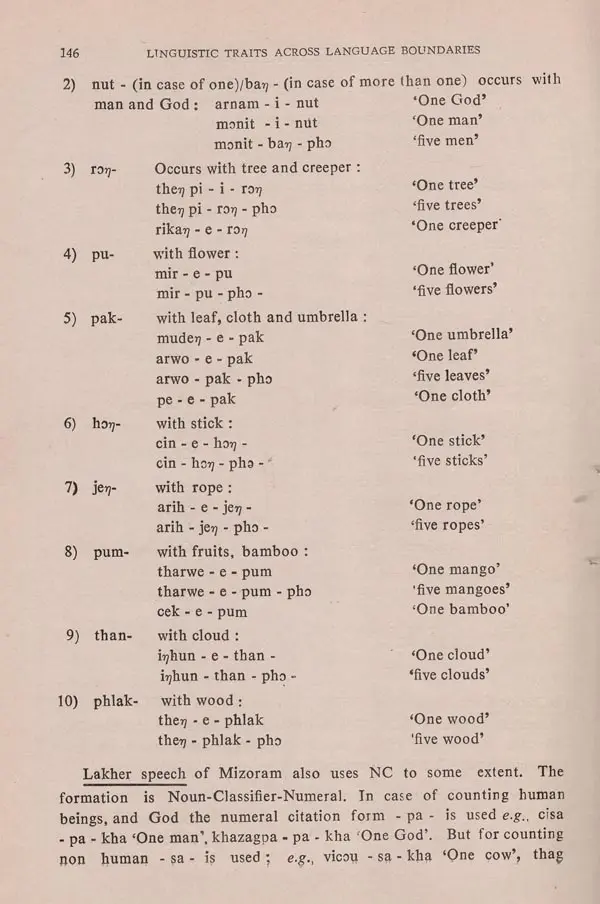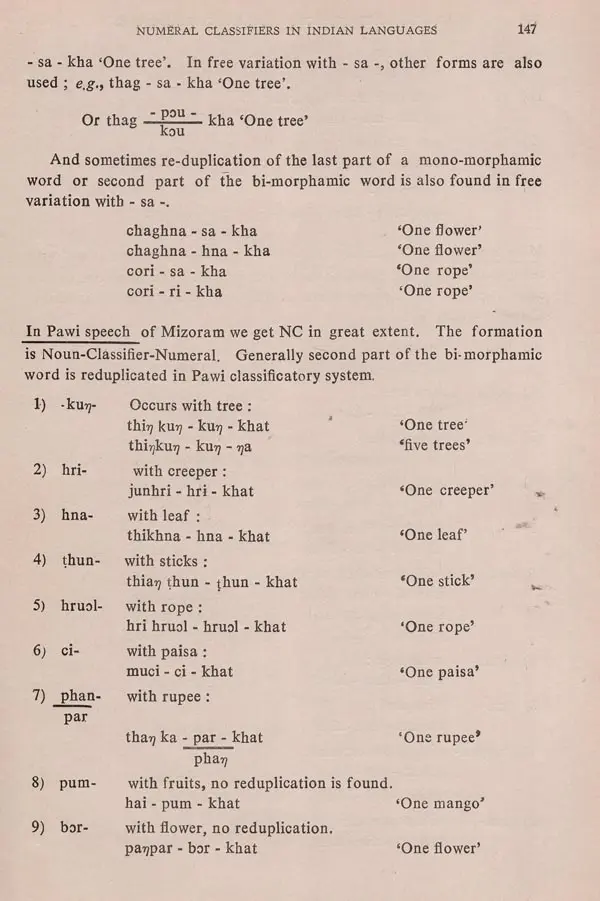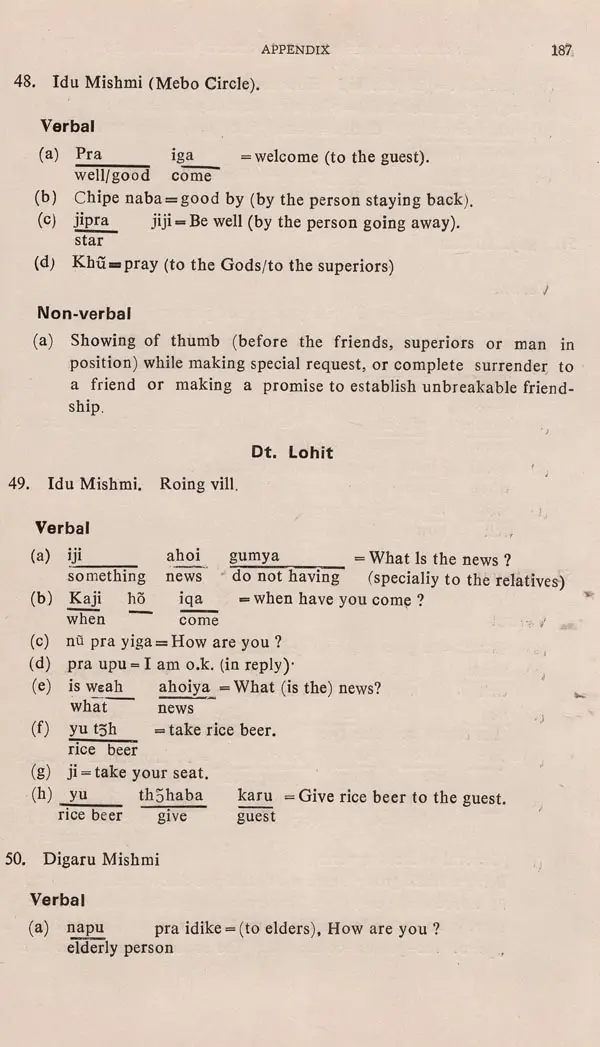Preface The Survey of India had undertaken many all India projects in 1976-77 including the project on "All India Culture Area and Cultural Traits Survey". The Linguistics Section of the Survey planned in conjunction with this project another project on the "All India Linguistic Traits Survey". Its objective was to map out the cross geretic distribution of selected linguistic traits viz, kinship terminology, colour categories, numeral systems, echo formation, sentence structure, numeral, classifiers and greetings and salutations to test. This was designed to test the hypotheses about India as a linguistic area, etc. Extensive field work was conducted all over the country to generate data on about 160 languages/dialects which genetically belong to the four different language families, ie, the Austro-Asiatic, Dravidian Indo-Aryan and Indo- Tibeto-Burman. On the basis of the empirical data collected from these language families, the researchers have highlighted the different facets of contact among these language families. These have developed common linguistic characteristics because of the diffusion of grammatical and lexical elements resulting in structural convergence. This may be described as an aspect of "Indianization" in the area of languages irrespective of their genetic affiliations. It is evident from the papers presented in this volume that a linguistic family is not a static and isolated entity, but it is vibrant as it develops in interaction with other linguistic families.
Introduction The Survey of India had undertaken many all India projects in 1976-77 including the project on "All India Culture Area and Cultural Traits Survey". The Linguistics Section of the Survey planned in conjunction with this project another project on the "All India Linguistic Traits Survey". Its objective was to map out the cross geretic distribution of selected linguistic traits viz, kinship terminology, colour categories, numeral systems, echo formation, sentence structure, numeral, classifiers and greetings and salutations to test. This was designed to test the hypotheses about India as a linguistic area, etc. Extensive field work was conducted all over the country to generate data on about 160 languages/dialects which genetically belong to the four different language families, ie, the Austro-Asiatic, Dravidian Indo-Aryan and Indo- Tibeto-Burman. On the basis of the empirical data collected from these language families, the researchers have highlighted the different facets of contact among these language families. These have developed common linguistic characteristics because of the diffusion of grammatical and lexical elements resulting in structural convergence. This may be described as an aspect of "Indianization" in the area of languages irrespective of their genetic affiliations. It is evident from the papers presented in this volume that a linguistic family is not a static and isolated entity, but it is vibrant as it develops in interaction with other linguistic families.
Book's Contents and Sample Pages


